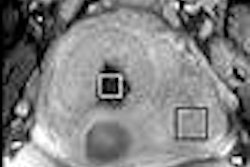Most MRI facilities are well aware of the operational aspects of MR safety that pertain to clinical practice and patient-care activities. Filling out a longer screening form and keeping techs current on their continuing education units help address safety issues, and may do so without additional costs. But for some, when it comes to investing in MR-safe equipment, access controls, or changing rooms to gown patients, the MBA-side of the brain takes over.
They want to know what "return on investment" they can expect to see from these investments. Their skeptical nature assumes that money spent on safety would be better piled up and lit on fire, where at least it would roast a marshmallow or two. But there is mounting evidence to support the long-held contention that safety really does pay!
Starting with the most dramatic -- the floor polisher, chair, or oxygen tank sucked into the bore -- these accidents are quite expensive. Any stuck object requiring a ramp-down is going to have a base price tag of $20,000 in vendor engineer time. Plus, you can probably count on a few days of interrupted patient throughput (at around $800 per hour of lost revenue). And if the accident damaged the shroud, table, coils, or phantoms, you can start adding repair and replacement costs in $10,000 increments. Repairs for these sorts of accidents have been known to cost more than $200,000.
And if you think that these accidents are rare or only occur at other facilities, think again. Staff at the National Research Council Institute for Biodiagnostics in Canada have estimated that major missile events (those that should involve a vendor ramp-down) occur at a rate of once every three to five years. Keith Kopp of Kopp Development in Jensen Beach, FL, extrapolating the accident data from published reports, has a slightly more conservative estimate of one accident every six years.
If an MRI system is expected to have a functional life of 10 years, this means that on average every system will experience between one and three of these accidents. Assuming two major incidents with no equipment damage, this represents a minimum total cost to the facility of $70,000 in vendor engineer services and lost revenue. Throw in equipment damage or the injury of a patient or staff member, and the costs of two accidents could begin to rival the cost of the MRI unit! But the value of safety prevention doesn't hinge on these sorts of headline-grabbing accidents to be demonstrated. There's also money to be made in rudimentary, day-to-day operations.
In a recent real-world test of the efficacy of new ferrous detection systems, the test hospital found that roughly half of the patients who had successfully cleared the standard screening process would have entered the magnet suite with ferrous materials on their person. Of those carrying ferrous materials, half were found to have ferrous trim on their clothing or other secured objects that didn't represent a missile threat. The other half were carrying phones, pagers, keys, and other assorted loose objects that had the potential of becoming airborne missiles in the magnet room. Even if not one of these objects ever flew, the fact that this many ferrous objects would have made it into the magnet room suggests that there would likely have been a number of rescreen and rescan episodes. For a service that depends on throughput for its profitability, delays in scanning a patient equal lost revenue.
The drips and drabs of lost throughput collect over the course of a year and can result in tens of thousands of dollars annually in lost revenue. Obtaining just one additional $600 scan per week from efficiency improvements results in more than $30,000 additional annual revenue per magnet.
But the tremendous gains that can be found from safety and efficiency improvements don't happen by happenstance. They require a careful analysis of MRI equipment, suite layout, and operations. Hospital and imaging faculties can undertake these facility evaluations by pooling the knowledge of the MRI technologists and facility design and construction staff.
With resources such as the "American College of Radiology White Paper on MR Safety," MRI vendor materials, and the latest information on U.S. Food and Drug Administration safety alerts and suite design, this team can evaluate a facility and make recommendations to reduce the likelihood of accidents and improve patient throughput. Of course, it isn't necessary to reinvent the wheel.
For a fee of less than $10,000, facilities can obtain a professional suite audit that addresses suite safety and operational issues that directly impact profitability. This audit will inform a facility about ways to improve safety and throughput. And increased throughput means increased revenue. At $600 per scan, it takes only 17 additional scans to reach payback -- for a single magnet, that's only one more scan every three weeks to achieve payback in one year.
So safety, when approached systematically, has a significant return on investment. By enhancing safety, a facility can improve the capacity for both patient care and profitability.
By Tobias Gilk
AuntMinnie.com contributing writer
October 14, 2005
Reprinted from www.mri-planning.com by permission of the authors. If you would like more information on any aspect of MR facility design or safety, please contact Robert Junk or Tobias Gilk at Jünk Architects.
Related Reading
Interim trailer leasing: The hidden cost of MRI suite renovations, September 28, 2005
A shocking story of MRI static discharge, September 21, 2005
DI in the OR: The advent of intraoperative imaging, August 31, 2005
Modular done wrong: a $3 million barnacle, August 22, 2005
When good vibrations go bad -- an MRI full of sound and fury, August 2, 2005
Copyright © 2005 Jünk Architects, PC



.fFmgij6Hin.png?auto=compress%2Cformat&fit=crop&h=100&q=70&w=100)




.fFmgij6Hin.png?auto=compress%2Cformat&fit=crop&h=167&q=70&w=250)











